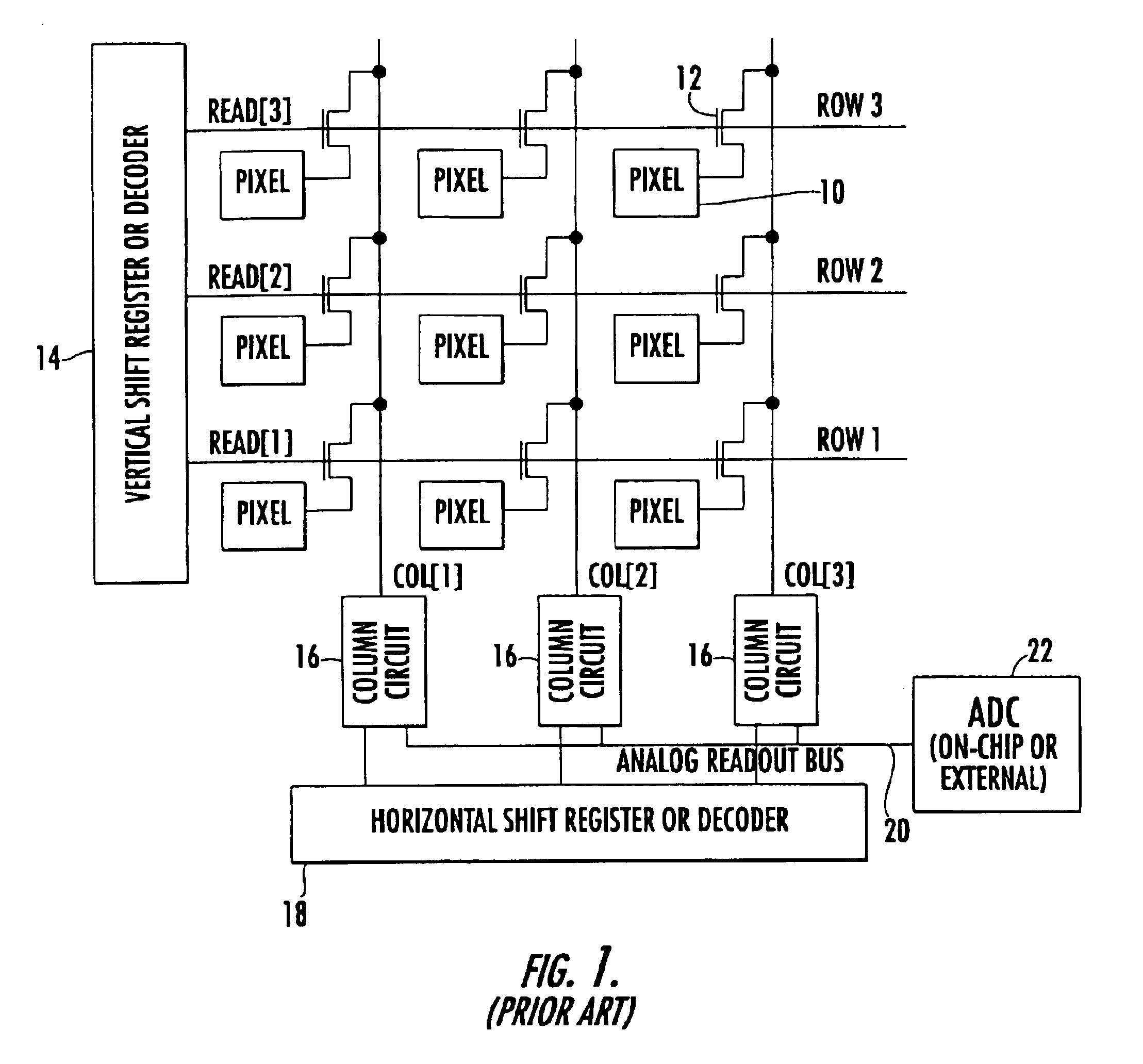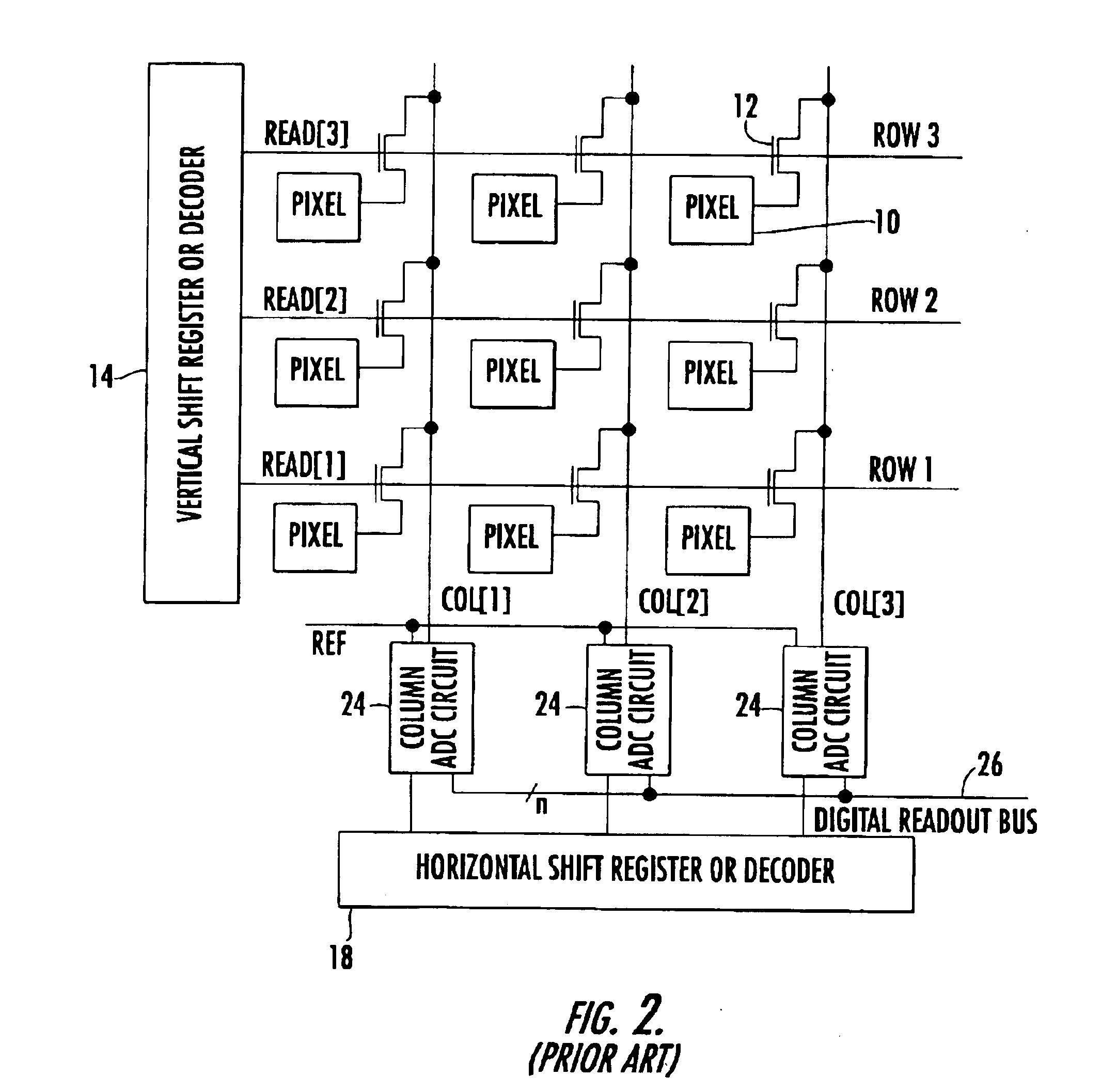Modification of column fixed pattern column noise in solid state image sensors
- Summary
- Abstract
- Description
- Claims
- Application Information
AI Technical Summary
Benefits of technology
Problems solved by technology
Method used
Image
Examples
Embodiment Construction
Referring now to the drawings, FIG. 3 shows an embodiment of a solid state image sensor with a per-chip ADC architecture, similar to that of FIG. 1, but modified to implement a column FPN reduction technique in accordance with the present invention. As in FIG. 1, the sensor comprises a matrix of pixels 100, associated read switches 102, a vertical shift register (decoder) 104, column element circuits 106, a horizontal shift register (decoder) 108, analog readout bus 110 and ADC 112. In addition, each column includes a first chopper circuit 114 upstream of the respective column element 106, and the readout bus 110 includes a second chopper circuit 116 downstream of the column elements 106 and prior to the ADC 112. The operation of the chopper circuits 114 and 116 is controlled by a common CHOP signal line 118.
FIG. 4 shows a preferred embodiment of a solid state image sensor with a per-column ADC architecture, similar to that of FIG. 2, but again modified to implement a column FPN red...
PUM
 Login to View More
Login to View More Abstract
Description
Claims
Application Information
 Login to View More
Login to View More - R&D
- Intellectual Property
- Life Sciences
- Materials
- Tech Scout
- Unparalleled Data Quality
- Higher Quality Content
- 60% Fewer Hallucinations
Browse by: Latest US Patents, China's latest patents, Technical Efficacy Thesaurus, Application Domain, Technology Topic, Popular Technical Reports.
© 2025 PatSnap. All rights reserved.Legal|Privacy policy|Modern Slavery Act Transparency Statement|Sitemap|About US| Contact US: help@patsnap.com



